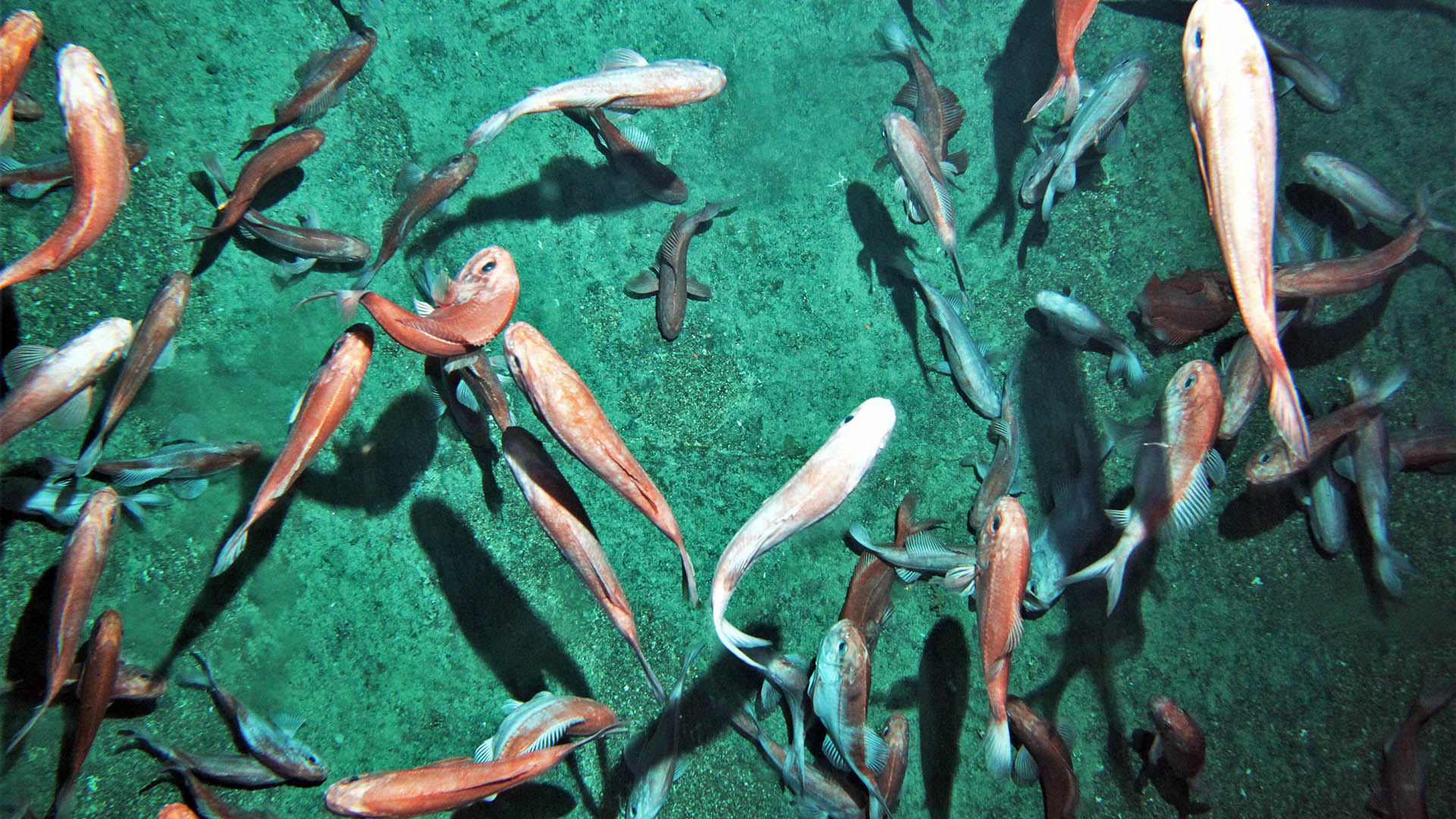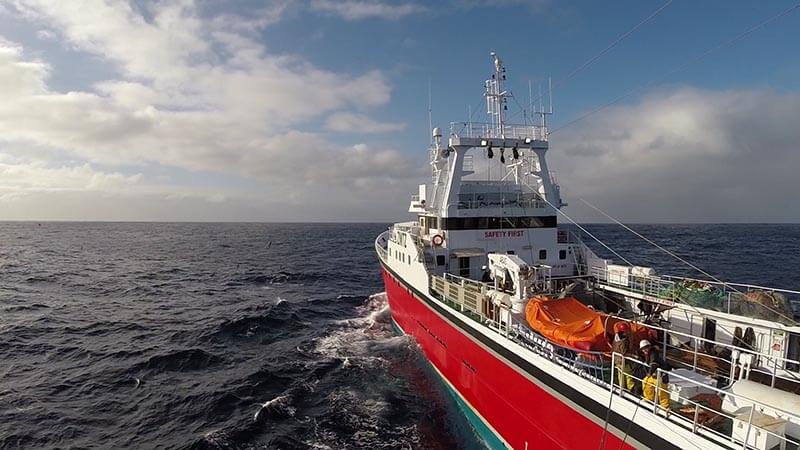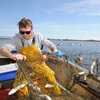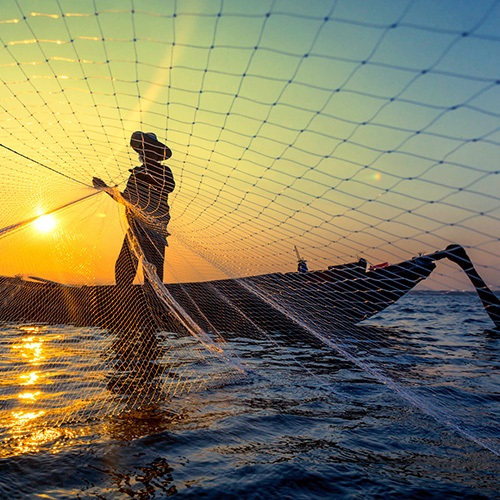For years, orange roughy was the go-to example of overfishing. A deep-sea species known for its longevity, slow growth and living up to 150 years, orange roughy faced near-collapse in the late 20th century due to overfishing. But today, several New Zealand and Australian orange roughy fisheries have earned the blue tick of approval through MSC certification. It’s a turnaround worth celebrating — but only for those stocks that voluntarily underwent an independent MSC assessment. Many orange roughy stocks across the region remain uncertified due to low catch rates and a poor understanding of the extent of rebuilding, making the pursuit of certification a lower priority.
A troubled past
High catches of orange roughy in the 1980s and 90s came with serious consequences. Demand soared and harvest levels increased rapidly. The collapse wasn’t purely driven by demand; in fact, so many fish were caught that markets became saturated, leaving unsold catch to be discarded as landfill or turned into fertiliser. The species’ biology - slow-growing and late to mature made it particularly vulnerable. Catches peaked and then crashed, with stocks across New Zealand and Australian waters declining sharply. By the early 2000s, orange roughy was widely considered a cautionary tale of poor fisheries management and unsustainable practices.
Hitting rock bottom and building back
For many, the story could have ended there. But governments, scientists, environmental groups and the fishing industry refused to give up. In both New Zealand and Australia, the journey to sustainability has been a long one - marked by hard lessons, technological innovation and a genuine commitment to change.
In New Zealand, the first certified orange roughy fishery achieved Marine Stewardship Council (MSC) standard in 2016 - the first orange roughy fishery in the world to achieve this recognition. However, sustainability isn’t a box that’s ticked once and forgotten. In 2023, the New Zealand orange roughy fishery voluntarily self-suspended part of its MSC certificate after the withdrawal of the fishery's stock assessment, where independent scientists cited increased uncertainty about its accuracy in reflecting the fishery's health.
The subsequent self-suspension was a proactive and responsible move by the fisheries management, showing that the commitment to sustainability runs deeper than achieving certification alone.
On the other side of the Tasman, Australia’s orange roughy fishery began its MSC journey later, but with no less determination. In 2020, the fishery first attempted MSC assessment but ultimately withdrew after an objection during the stakeholder review period rendered the fishery ineligible for certification.

CSIRO scientists measuring orange roughy with an Acoustic Optical System (AOS). Credit: CSIRO
The Australian certification: A milestone achievement
Australia’s orange roughy fishery re-entered MSC assessment in 2024 to the latest version of the MSC standard. This was made possible by updates in MSC Fisheries Standard v3.0, which better accommodate precautionary management and recovery strategies for vulnerable species like orange roughy.
The process was thorough and, at times, challenging. Following a full assessment, the fishery was recommended for certification in June 2024. However, as part of the MSC’s process, a formal objection was lodged - a critical part of the system that allows any registered stakeholder to challenge certification decisions.
The objections raised concerns about the appropriateness of stock assessments when there were some gaps in knowledge around the biological behaviour of orange roughy and therefore the level of precaution applied when setting sustainable catch limits. This triggered another formal, independent adjudication process. After months of careful consideration and expert review, the Independent Adjudicator issued a final decision in February 2025, confirming that the auditors had correctly applied the MSC Fisheries Standard and followed the Fisheries Certification Process when assessing the Australian Orange Roughy fishery.
They concluded by noting the auditor’s final determination to certify the fishery as sustainable was indeed the correct decision. Like all MSC certified fisheries, the fishery will be monitored through annual surveillance audits for any performance changes throughout its five-year certificate.

Orange roughy underwater. Image supplied.
How the fishery achieved certification
The fishery’s path to certification has been anything but easy. It involved:
- Setting catch limits that are deliberately lower than the Maximum Sustainable Yield to account for scientific uncertainties and the species' biological vulnerabilities
- Investing in advanced stock assessments and acoustic surveys to understand how many fish can be sustainably caught whilst allowing the fishery’s recovery to target levels.
- Enhancing habitat mapping to minimise impacts on vulnerable ecosystems
- Strengthening management arrangements and compliance monitoring with over 50% of fishing trips with independent observer coverage
- Orange Roughy Management Areas (ORMAs) were developed jointly between AFMA [the regulator] and the fishing industry. ORMAs restrict fishing to areas that have previously been fished, and regulations were implemented that restricted fishing to prevent the risk of overcatching and increased waste.
- Ongoing dialogue with scientists, stakeholders and the broader community
This decision is not just about one fishery - it’s about the integrity of the certification process itself. It demonstrates that concerns are heard, improvements are demanded, and certification is only awarded when the evidence is clear.

Explorer during an orange roughy survey trip. Image supplied.
What MSC certification really means
Over the past 25 years, MSC-certified fisheries have made over 2,362 improvements, demonstrating how the MSC enables long-term sustainability through practical changes like reducing bycatch and ensuring management strategies remain responsive to any encountered variability in fishery performance.
For both New Zealand and Australian orange roughy fisheries, MSC certification is not a gold medal - it’s a promise. Certification requires continual improvement, monitoring and transparency. It’s about proving that these fisheries are not only harvesting sustainably today but will continue to safeguard orange roughy populations and the broader marine environment into the future.
Lessons from the roughy revival
The orange roughy turnaround is one of the most extraordinary stories of fishery recovery in recent history. It shows that even a fishery once labelled ‘collapsed’ can recover when science, industry and government work together.
But the journey is ongoing. The suspended component of New Zealand’s fishery is continuing its science-led work before seeking re-certification. Australia’s fishery, now certified after a five-year journey involving independent review and public scrutiny, will be subject to rigorous annual monitoring.
It's important to emphasise that this recovery story applies specifically to the certified orange roughy fisheries – this represents almost all orange roughy caught in Australia (82%) and over half (54%) in New Zealand. The performance of uncertified orange roughy fisheries remains undefined against a global best practice standard, and unable to explore the market opportunity that can come from demonstrating sustainability against a third-party certification approach.
This shared achievement sends a powerful message: with collaboration, accountability and persistence, sustainable seafood is possible - even for a species once heavily overfished.



